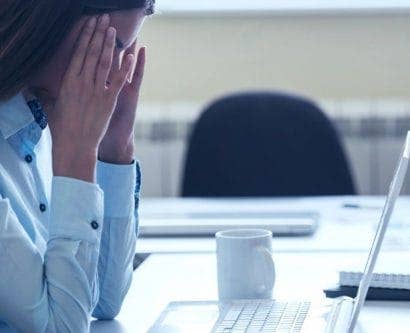Rest Breaks at Work: What are the Requirements?
Rest breaks are a vital part of the working day, regardless of your job role or the industry you work in. Everyone is entitled to some form of break, depending on the role and hours worked, and rest breaks at work are important for both our physical and mental health.
In this article, we will outline the law on breaks at work, explain in detail a few reasons why they are so vital and provide some suggestions for employee break rooms.
What is the Law on Breaks at Work?
Depending on the type of work and hours worked, employers in the UK must give employees time to rest. Breaks allow employees to eat, drink, de-stress and find motivation, and having a dedicated space separate from the normal working environment maximises the benefit.
It’s important, whether you’re an employer or employee, that you understand the legal rights people have in terms of rest breaks at work.
The Working Time Regulations 1998 is the primary UK legislation that outlines provisions for rest breaks at work and time off.
Under the legislation, there are three types of breaks for workers over the age of 18:
- At work, employees are entitled to a minimum of one uninterrupted 20-minute break if they work more than six hours a day. This break must be within their working time and shouldn’t be taken at the start or end of their working day.
- Between shifts, employees are entitled to a minimum of 11 hours rest between working days. For example, if they finish work at 8pm they can’t start work again until 7am.
- During the week, employees are entitled to a minimum of an uninterrupted 24 hours without any work each week, or uninterrupted 48 hours without any work each fortnight.
The amount of time given for a rest break at work will depend on the company; some may stick to the minimum 20 minutes while others may give staff more.

Employers can decide when employees have to take their break as long as they fulfil the following conditions:
- The break is taken in its entirety at some point in the middle of the day – not at the beginning or end.
- Employees are allowed to leave their desk or workstation to take their break.
It doesn’t count as a rest break if an employee is required to go back to work before the break is finished by their employer.
However, unless it is specified within their contract, employees don’t have the right to:
- Take smoking or vaping breaks.
- Get paid for rest breaks.
You can find more information on rest breaks at work on the Health and Safety Executive (HSE) website and the UK government website.
Young workers
Young workers have extra rights to protect them because of their age. The rules on young workers apply from school leaving age until they turn 18.
By law, a worker aged between school leaving age and 17 must not work more than eight hours a day and 40 hours a week.
They must also have, as a minimum:
- A 30-minute break if their working day is longer than 4.5 hours.
- 12 hours’ rest in any 24-hour period in which they work (for example, between one working day and the next).
- 48 hours’ (two days) rest taken together, each week or – if there is a good business reason why this is not possible – at least 36 hours’ rest, with the remaining 12 hours taken as soon as possible afterwards.

Did you know…
The Worker Protection Act 2023 changes came into effect for all businesses in October 2024. The Act places a new legal obligation on employers to take reasonable steps to prevent sexual harassment in the workplace. Our Sexual Harassment Training course helps businesses comply with their new responsibilities.
Why is it Important to Take Breaks at Work?
Rest breaks at work are vital for both our physical and mental wellbeing. The human body can’t stay in a static position for prolonged periods, nor can the mind focus continuously.
Little changes of scenery and activity are perfect for a quick stretch, but a longer lunch break is equally as important. Regular breaks can also help prevent common office-related injuries.
Below are some of the most important benefits of taking regular breaks at work.
Physical wellbeing
As we’ve explained, the human body isn’t designed to be static for prolonged periods of time as this can lead to a number of health issues, including:
- Musculoskeletal disorders (MSDs). This refers to any injury, damage or disorder of the joints or tissues in the upper or lower limbs, neck or back that can cause discomfort and pain, such as repetitive strain injuries (RSIs). MSDs are especially common in office workers, if they have a poor desk arrangement and/or adopt bad postures.
- Visual discomfort. Again, this is common with office workers who use display screen equipment (DSE). While it has not been proven that DSE causes permanent damage to eyesight, it is commonly associated with eye strain and fatigue.
Rest breaks help minimise strain on the:
- Lower back.
- Neck and shoulders.
- Thighs and bottom.
- Eyes.
- Wrists and fingers.

You should take frequent breaks away from your work area and walk about to break up long periods of sitting still. If you work at a desk, you should stretch, alter your position slightly or do some small desk exercises at least every hour. This prevents you from remaining static for too long, especially in an awkward or twisted position, as this can cause MSDs and headaches.
If you work in a role that involves manual handling or physical excursion, it’s important to take a break to prevent muscle strain and overuse.
Health and Safety Courses
Employees need to be sufficiently trained to handle occupational hazards, and understand how to keep themselves and others safe at work. Check out our range of Health and Safety courses, including Health and Safety Training for Employees, Manual Handling Awareness and Display Screen Equipment (DSE) Training.
Reducing stress
Most people experience stress at work, in varying degrees of severity. High workloads and demanding deadlines often result in employees skipping lunch breaks and working long hours.
However, it’s important that you have a good work-life balance. Otherwise, it can result in a quick burn out, high levels of stress and high employee turnover. Taking regular breaks at work can help to reduce the risk of stress.
Prolonged stress can create a number of symptoms including, but not limited to:
- Anxiety.
- Depression.
- Sleeping problems, such as insomnia.
- Backache, tension and muscle fatigue.
- Headaches.
- Irritability.
- Loss of appetite.
Check out our article on stress management activities to try at home. Equally, you may find our free workplace stress risk assessment helpful.
Improving concentration and productivity
Our ability to maintain consistent attention dwindles after around 45 minutes, so stepping away from a piece of work, shifting attention to something else, and then returning with fresh eyes gives us a chance to refocus.
It can also help with productivity. This is defined as efficiently completing tasks or achieving goals, without compromising either the quality of the work or your physical or mental wellbeing.

It might sound counterproductive, but if you can feel your progress slowing down or you are struggling to complete a certain task, sometimes the best thing you can do is step away from the problem for a short while. This isn’t just applicable to office work, either, where you can leave your desk – this applies to any task in any setting.
Taking five minutes away from the situation to reset allows you to return with a clearer head. This can help you to see the solution to a problem more clearly and therefore increases the chance of you completing it, making your day more productive.
For more information, check out our article: How to be Productive at Work: Guidance for Employees.
Mental wellbeing
Taking regular breaks is important for our mental health and wellbeing, especially in the workplace. Depending on where you work, this will be easier for some than others, but you can improve wellbeing with some minimal changes.
To switch things up, try:
- Making a round of tea or coffee.
- Stretch your arms and legs.
- Wash any dishes left in the kitchen sink.
- Water the office plants.
All of these things may seem small, but they can make a huge difference for our mental wellbeing, and you can return to work with a much clearer, more focused mind.
Mental Health Courses
We offer a range of Mental Health courses that have been developed by our team of experts to help you manage your own mental health as well as learn the skills to support others. These include Mental Health Awareness, Resilience Training and Stress Awareness in the Workplace.
Working from home
Over the past couple of years, many organisations have chosen to implement hybrid working, meaning there is a large proportion of the workforce that operate from home. Some companies have even introduced remote working full time, meaning that more people are working from home than ever before. You can check out our article on the benefits and challenges of working from home, here.
The tips we provided earlier in the article are all still relevant and applicable to people who work from home – however, some are even more important to follow than for those working in an office full-time.
Rest breaks are just as important to take when working from home as they are in any other work environment. There can be a tendency to stay working at a desk for longer hours than you would in an office, due to the familiar setting, and there may not be anyone around to encourage you to take a break.
Break Room Ideas for Employees
In order to comply with the Workplace (Health, Safety and Welfare) Regulations 1992, there are certain welfare provisions that an employer must provide for their employees. This includes, ‘so far as is reasonably practicable’ providing adequate and appropriate welfare facilities for them while they are at work.
For all workplaces, permanent or temporary, minimum requirements must be met, including:
- A suitable seating area for workers to use during breaks. For example, facilities where employees can rest and eat meals. Where food is eaten, there should be a sufficient number of suitable tables and chairs with backrests. The area must also be clean and located where food will not get contaminated.
- Suitable and sufficient sanitary conveniences. These must be provided for all users at readily accessible places. There must be separate conveniences for men and women, unless each convenience is in a separate room of which the door can be locked securely from inside. Sanitary conveniences must have a supply of toilet paper and a means of disposing of sanitary dressings.
- Storage for employees to store their own clothing, such as coats. This should be in an area of the work premises that is well lit and kept clean.
- Changing facilities. If specialist clothing has to be worn for work activities, there must be enough changing facilities for the number of people expected to use them. These should be readily available, and ensure the privacy of the individual.
- Washing facilities. These must be well lit, ventilated, and kept clean. Washbasins must be provided with hot and cold or warm water. Where practicable, this should be running water. Facilities must include soap and a means for drying hands.
- An adequate supply of drinking water, which is free from contamination. This must be readily available to employees and others on the premises. Where water cannot be obtained from the public water supply, it should be provided via bottled water dispensers as a secondary supply.
You can find out more information on welfare provisions detailed in the Workplace (Health, Safety and Welfare) Regulations 1992 in the HSE’s guidance, here.
Generally, a break room includes a fully-equipped kitchen, including a kettle or tea and coffee machine and comfortable seats and tables. However, it can be beneficial to include some recreational aspects to encourage relaxation such as a bookshelf or a TV, and to enhance the environment with notice boards, photographs, plants, etc.

It’s important to make sure that break rooms are accessible and an inclusive environment for all employees. Check out our article on How to Promote Equality, Diversity and Inclusion in the Workplace for more information on this.
We hope you’ve found this article on why rest breaks are important for your business both informative and helpful. If you have any further questions, or wish to find out more information on the topics covered in this article, please don’t hesitate to get in touch with us at High Speed Training!
Further Resources:
- How to Promote Positive Mental Health in the Workplace
- The Cost of Presenteeism & Why It’s Not Just About Money
- How to Manage Stress at Work
- How to Deal with Anxiety at Work
- Promoting a Positive Health and Safety Culture: A Guide for Managers
- Workplace Health & Wellbeing Quiz
- Resilience in the Workplace: What are the Benefits and How Can Businesses Develop It?
- Menopause Awareness Training Course









